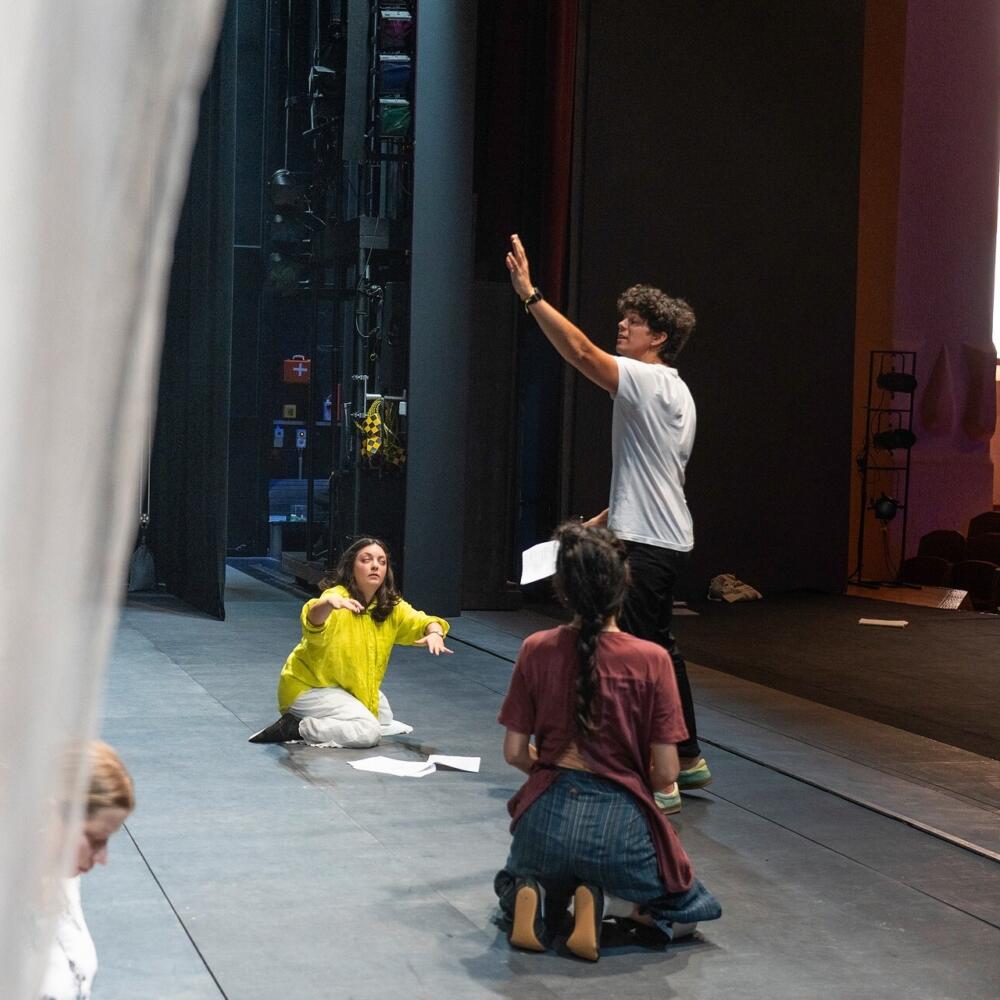I Close My Eyes, and Images Rise Up Within Me
Rafael Tavares directs the eurythmy in the 2025 production of Faust at the Goetheanum. A conversation with Wolfgang Held.
Wolfgang Held: What did you rehearse today?
Rafael Tavares: We just rehearsed a part of Faust II, the Classical Walpurgis Night scene, when Mephisto encounters the Lamiae, the Greek witches from Thessaly. It’s less about the individual figures than about the space these Greek mythic creatures form around themselves. Mephisto tries to grab them, and they instantly transform their appearance into physicality. That’s what we want to show: that the whole style of movement changes in this moment. At the exact moment of contact, the movement becomes more physical. That’s the tension between drama and eurythmy. Mephisto is horrified by these beings because transformation and metamorphosis, the quality of being alive, are not characteristic of Mephisto and don’t correspond to his nature. He comes from the “north” and is used to everything remaining the same for centuries. He never deals with development.
What’s important to you in terms of eurythmy when working in an ensemble?
When several eurythmists are on stage portraying beings like the Lamiae, it’s not just a matter of movement but of moving the shared space. Eurythmy has the means to do this. It can be portrayed that the five figures representing these Lamiae flow together with one shared quality. The inner sensation, the inward sensitivity of the eurythmists, plays a major role in this. When we use our consciousness to guide our inner sensations so that, through the rhythmic movements, the inner dispositions of the eurythmists soften the space, then we transform the space through eurythmy in a way that can be experienced by the audience. You don’t have to be clairvoyant to see it either; you become aware of it in or on your own body. This happens through the group of eurythmists as a whole. To successfully achieve it, the group has to move together like a choir. In this kind of choral work, it’s important for me to make sure that no one falls out of the group; that we all stay on board. The image we share in common is the bridge.
How does a shared image come about?
In the third act, there’s the chorus of Trojan women at the court of Sparta. There are nine of them on stage, and this gives us the experience of a full and abundant chorus. The movement of each character is important, as together, their movements become a whole through the shared story and the shared image. In this scene, one of the Trojan women, Panthalis, the leader of the chorus, steps forward. We get the first hint of the emergence of individuality. She’s described as the eldest—one could say the most mature in the chorus. She appears to already be on the way towards perceiving herself as an individual. In contrast, Helena already stands there as a single, individual figure. Helena herself comes to a sense of self-consciousness throughout the course of the scene.
This text is an excerpt from an article published in the (online exclusive) Goetheanum Weekly. You can read the full article on the website. If you are not yet a subscriber, you can get to know the Goetheanum Weekly for 1 CHF./€.
Faust 2025 at the Goetheanum
October 10-12th, October 18-19th, October 25-26th
- Production: Andrea Pfaehler
- Eurythmy: Rafael Tavares
- Co-direction: Isabelle Fortagne
- Dramaturgy: Wolfgang Held
- Music: Balz Aliesch
- Lighting: Thomas Stott / Dominique Lorenz
- Set design: Nils Frischknecht
- Costumes: Julia Strahl
Information and tickets faust.jetzt
Translation Joshua Kelberman
Image from the rehearsals, Photo: Xue Li

